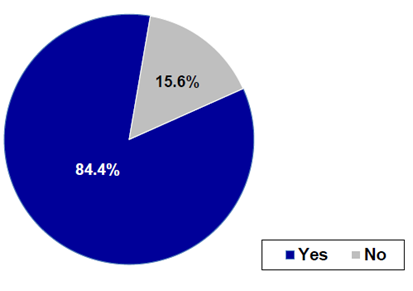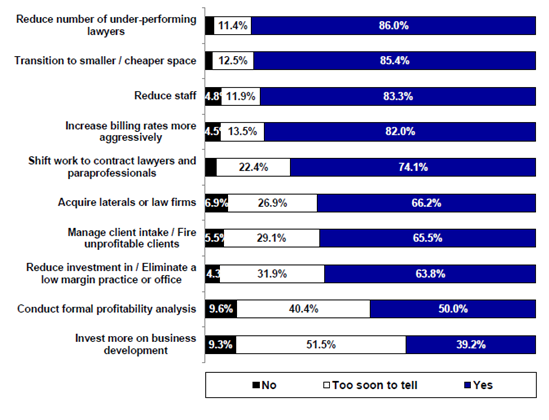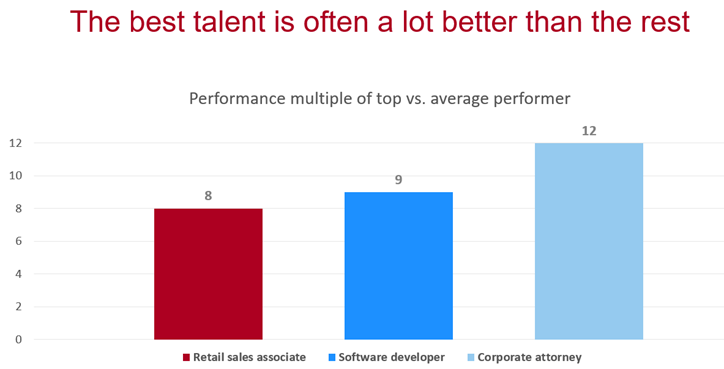Does your firm currently have any chronically under-performing lawyers?
Building on this, Altman Weil reports that,” in nearly a quarter of all law firms, more than 10% of lawyers are considered underperformers.” (emphasis mine)
Importantly, the same study provides hope for the firms who do address lawyer underperformance.
The question posed was: “For each of those things you’ve done to improve your firm’s profitability, has the action resulted in a significant improvement in profitability?” (emphasis theirs)
It is notable that among all these profit-enhancing tactics, reducing the number of underperforming lawyers topped the list. (NB: Post-pandemic, I expect “transition to smaller/cheaper space” may win out, however, easing out under-performers will remain near the top and with broader applicability to more law firms.)
To sum up, the solution to the single-highest risk factor to law firm profitability is the most effective tactic at actually improving profitability. And, the solution is entirely within the purview of each firm. Rarely are things this black and white.
There’s another (pretty obvious) reason not to dilute your partnership with under-performers; top performers are just better. Though we all know that instinctively, we (at least, I) generally had no clue know how much better top performers are. Fortunately, an analysis out of Bain demonstrates how much better “A” players are versus average performers. In the case of corporate lawyers, Bain found them to be 12 times better than average performers.[2] Imagine what the multiplier is versus under-performers. This from the Harvard Business Review:
The impact on firm culture
Let’s start with this from one of the savviest coaches in college football history.





